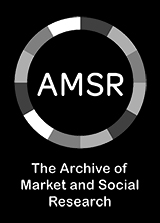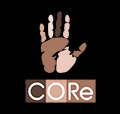MRS Silver Medal 2024
07 March 2024
The finalists for the best paper published by the International Journal of Market Research last year have been announced, recognising academic and practitioner authors with affiliations in Australia, Taiwan and the USA.
In How to signal product variety on pack: an investigation of colour and image cues authors Ella Ward, Jenni Romaniuk, Giang Trinh, John Dawes and Virgina Beal (University of South Australia) aim to empirically quantify the efficacy of using colours versus images as signals of product variety on pack. The research suggests images are a stronger and more explicit signal of product variety than colour. There are multiple implications arising from this study. It expands scholarly research on the use of colours in product extensions and, at the same time, provides a series of valuable benchmarks for industry practice in the portfolio management domain.
Maria Raciti’s (University of the Sunshine Coast, Australia), Unmuted: An Indigenist truth-telling provocation article draws inspiration from Australian Indigenous scholar Nakata’s (2007) theory of the cultural interface—the touchpoint between Western knowledge systems and Indigenous knowledge systems. She tells a story about Indigenous methodologies and other acts of research sovereignty using an Indigenous storytelling methodology. As an Aboriginal marketing professor she reflects, and challenges with provocative questions designed to shock you into new thinking and truth-telling. Maria also provides guidance to improve your market research practice.
People with a mild intellectual disability: inclusive research lessons by Elias Kyriazis, Alan Pomering and Heather Marciano (University of Wollongong, Australia) presents guidelines for researchers working with individuals with mild intellectual disability (MID). They collaborated with representatives from the Disability Sector, Cancer Council NSW and the vulnerable community of people with MID to overcome the difficulties that they face in interpreting mainstream cancer prevention messaging and take ownership of their skin cancer checking behaviour by using co-created resources that could be easily understood and acted upon by the target audience. As a result of the project, nearly 20% of the vulnerable population sample checked themselves for skin cancer spots for the first time.
Finally To see the invisible: An empirical comparison of methods for text-based sentiment analysis of online contents from people with autism spectrum condition authors Kuan-Chou Ko, Shian-Ko Liu, Chih-Ping Wei, Ren-Han Yang (National Taiwan University) and Jia-Shiuan Hsieh (University of New York at Buffalo) explore a secondary research method that is able to capture affective states of autistic people. Based on the results of three content analysis methods in their case study, they recommend a hybrid method that involves a collaboration between human coders and AI-enabled analysis. The paper also shows that autistic groups would provide emotional information in an online environment but in a different behavioural pattern at the aggregate level, which is initial evidence to encourage future empirical research on autistic consumers to include emotional factors.
Fellows and Certified Members can read these papers online today via the IJMR website. Other Members can request copies by emailing membership@mrs.org.uk.
The winning paper will be announced at the MRS Excellence Awards lunch on 7 June.
Get the latest MRS news
Our newsletters cover the latest MRS events, policy updates and research news.










